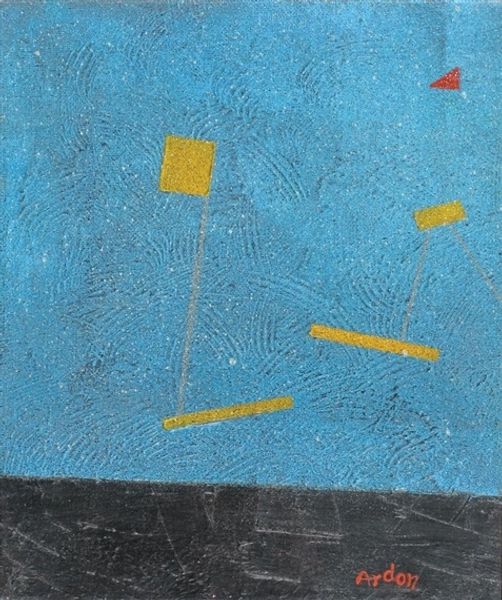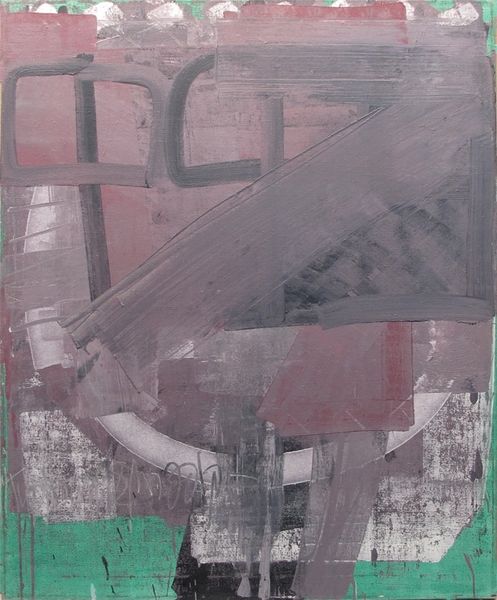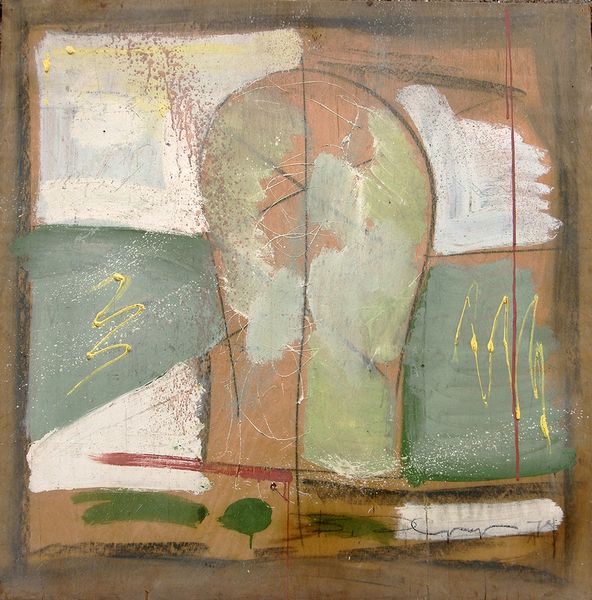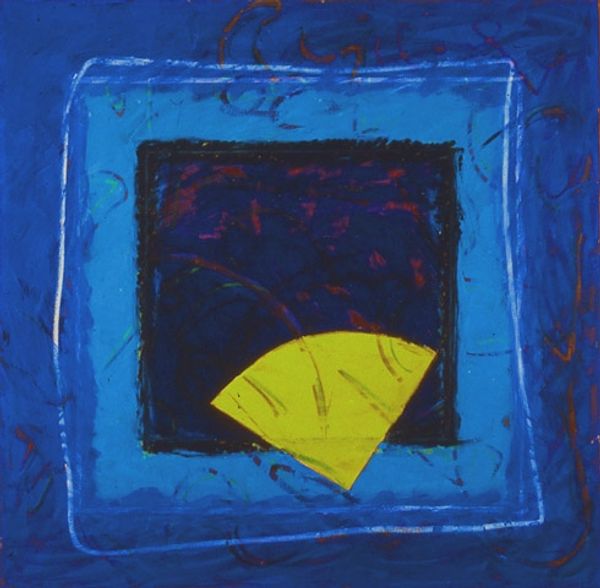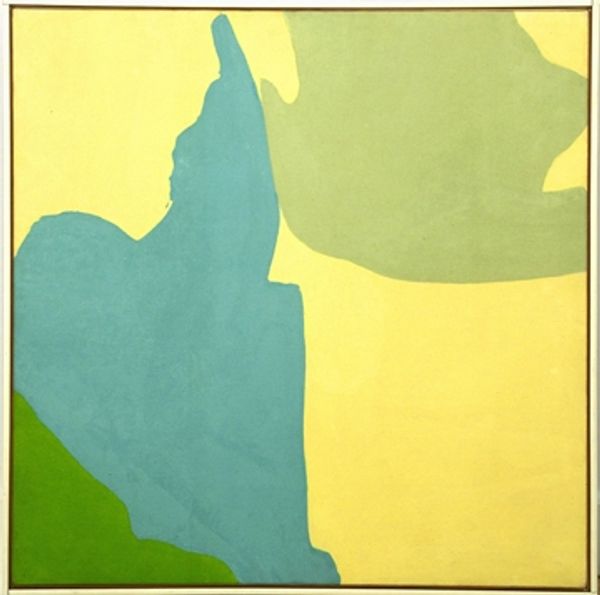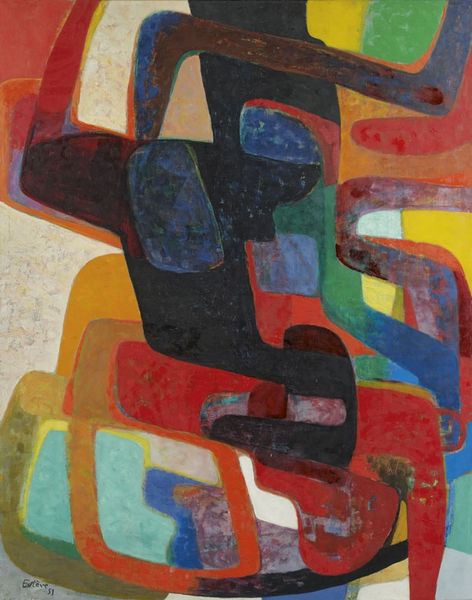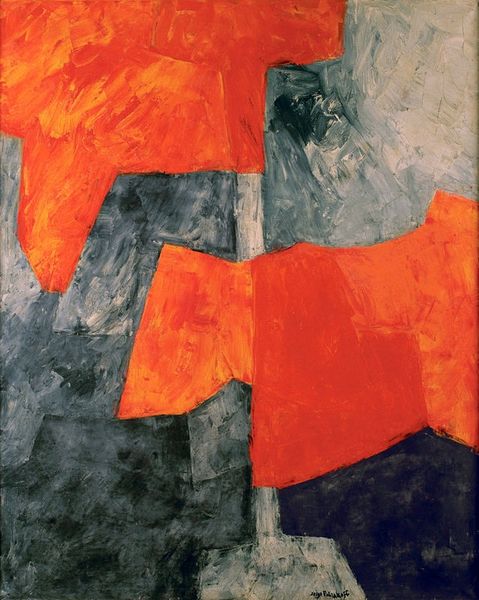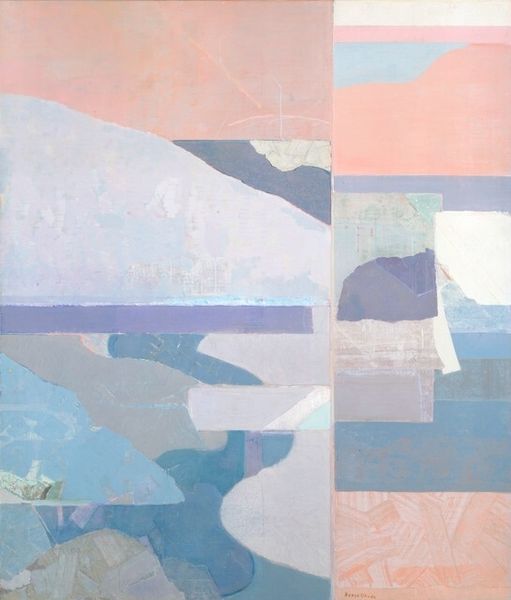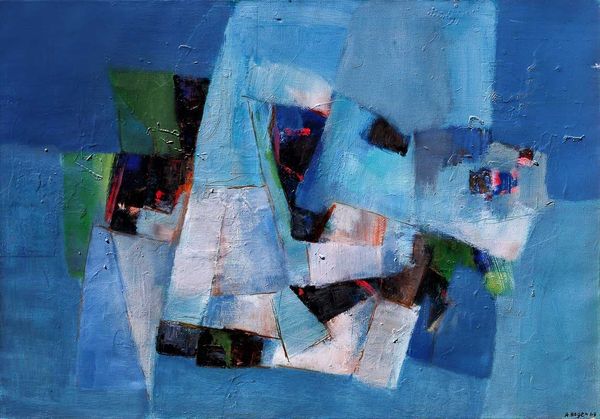
mixed-media, acrylic-paint
#
mixed-media
#
acrylic-paint
#
art-informel
#
geometric-abstraction
#
abstraction
#
modernism
Copyright: Serge Poliakoff,Fair Use
Curator: Before us, we have Serge Poliakoff’s “Composition” from 1955, achieved with mixed media incorporating acrylic paint. Editor: It strikes me immediately as restful, almost aquatic. The muted blues give it a tranquil quality, despite the rather bold geometric shapes. Curator: Poliakoff, a key figure in Art Informel, was deeply interested in the materiality of paint. You can see it in the layered applications, the textures he built up. It’s not just about the image, but about the act of painting itself, the labor involved, and how the material responds to the artist’s touch. The process itself is central. Editor: And yet, this also reflects the postwar era's artistic experimentation. How the cultural landscape was being reshaped after the cataclysms of war. The rejection of representation echoes a society grappling with immense upheaval and uncertainty, manifested here in abstraction. The deliberate composition hints at efforts to make sense of this chaos. Curator: Precisely. Considering Poliakoff's Russian émigré background, one might examine the geopolitical dynamics at play. What traditions and experiences did he bring to this predominantly Western European artistic sphere? These textures and layers were not just born in a vacuum; they are steeped in social and historical context. What influences acted on Poliakoff? What opportunities did institutions and markets provide for displaying and selling "Composition?" Editor: The painting hangs now on our museum wall, reinforcing specific histories about postwar abstraction, maybe suppressing or obscuring other valid histories about how Art Informel contributed to European and American artistic styles. These are choices embedded in art curation and art writing that have shaped its legacy, after all. Curator: Yes, even the choices about materials - acrylic, in this instance - demonstrate a modern turn toward new industrial possibilities, shaping consumption as well as the modes and appearance of art. Editor: Absolutely. It invites contemplation on how art interprets, expresses, and inevitably impacts our perceptions of historical forces. Looking at it now, it is a lens for critical awareness. Curator: I think it provides a case study for the making of both images and histories. Thank you for this deep reflection. Editor: Likewise. These kinds of close, contextualized readings expand what art means, not just what it shows.
Comments
No comments
Be the first to comment and join the conversation on the ultimate creative platform.


